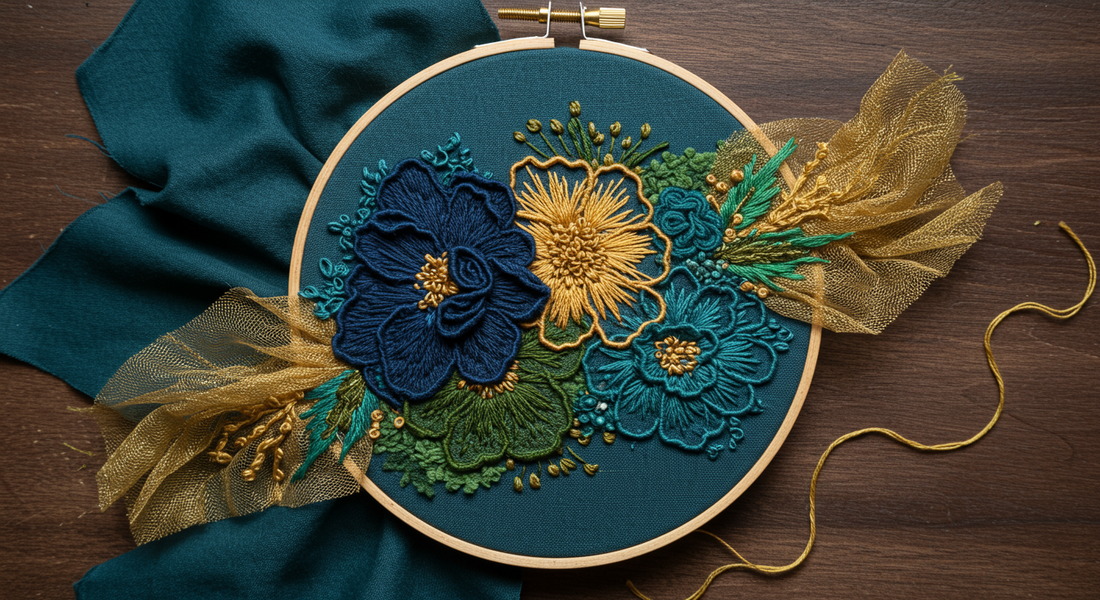
Layering Techniques for Texture
Share
Creating Depth, Dimension, and Visual Interest in Hand Embroidery
In embroidery, texture is more than just a visual detail—it’s a tactile language that transforms simple designs into captivating works of art. Whether you’re aiming for a soft, painterly feel or bold, sculptural relief, layering stitches and materials is a powerful technique for adding richness to your embroidery.
This article explores how to layer stitches, combine thread types, and incorporate textile depth into your embroidery practice.

1. The Concept of Layering in Embroidery
Layering involves stacking stitches or materials on top of one another to create raised surfaces or overlapping effects.
Why it matters:
- Adds visual depth and draws the eye
- Creates texture contrast within a piece
- Suggests movement, shading, or light effects
Layering can be subtle (e.g., color shading) or dramatic (e.g., 3D effects).

2. Layering Stitches
Use specific stitch combinations to build up textured areas:
Popular combos:
- Backstitch base + satin stitch overlay – Ideal for bold outlines
- Stem stitch + French knots – Great for floral stems with blooming buds
- Long & short stitch + seed stitch – Perfect for fur, feathers, or grass textures
Alternate the length, direction, or density of your stitches for natural variation.

3. Color & Thread Layering
Layering is also about building depth with shading and thread types:
Tips:
- Blend analogous colors (e.g., light pink to rose) to mimic depth
- Start with darker tones underneath, then overlay lighter tones
- Mix thread types (matte cotton + shiny rayon) for contrast
Experiment with gradients, highlighting, and contour lines within shapes.

4. Dimensional Techniques
Bring embroidery off the surface with 3D layering:
- Raised satin stitch: Layer felt under stitching to create padding
- Stumpwork: Use wire to create bendable, liftable shapes (e.g., insect wings)
- Couching: Lay thick yarn or ribbon on top of fabric and stitch over it
These methods are excellent for jewelry, sculpture, or textile art.

5. Layering Materials
Combine fabric and textile media:
- Appliqué: Stitch cut fabric shapes onto a base layer
- Overlay tulle or organza: For translucent effects
- Trapunto: Stuff stitched shapes to give them fullness
Layering different fabric weights and transparencies adds complexity to your design.

6. Creative Use Cases
- Botanical designs with layered petals and leaves
- Animal portraits with textured fur or feathers
- Abstract art pieces using thread as paint strokes
Use mood boards or reference images to plan your layered compositions.
Final Thoughts
Layering in embroidery opens up a world of depth and artistry. It allows you to sculpt with thread, paint with fibers, and build scenes that feel alive. With practice, layering can transform even simple motifs into tactile masterpieces.